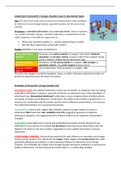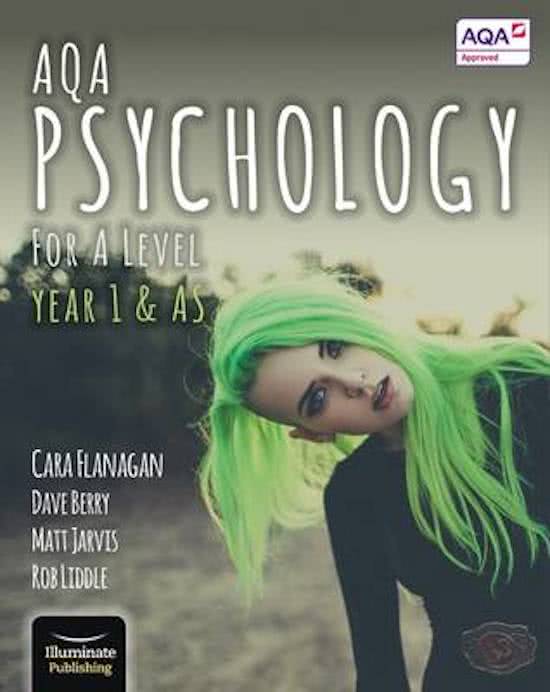Attachment: Ainsworth’s strange situation study & attachment types
Aim: The aims of this study were to assess how infants behave under conditions
of mild stress to test stranger anxiety, separation anxiety and the secure base
concept.
Procedure: a controlled observation using a two-way mirror. Series of episodes
e.g., mother and baby, stranger, and baby, baby alone, recorded based on the
child’s responses in the different stages such as...
Where they proximity seeking? i.e., actively approaching for comfort
How did they respond when united with mother?
Results: Identified 3 main types of attachment.
Secure attachment Did explore but seeks proximity to caregiver (safe base). Moderate
(type B) separation and stranger anxiety. Accepts comfort from caregiver during
reunion. Majority studied had this attachment type.
Insecure avoidant Did explore, do not seek proximity to caregiver. Little stranger or
(type A) separation anxiety, may avoid caregiver during reunion.
Insecure resistant Lack of exploration. Seeks proximity to caregiver. High
(type C)
This led to the caregiver sensitivity hypothesis, where a mother’s behaviour towards the infant can
predict the attachment type the infant will possess.
Evaluation of Ainsworth’s strange situation A03:
Incomplete model? The original classification system was incomplete, as categories were not always
applicable to the infants’ responses, some did not fall into an attachment type. Maine identified a 4 th
attachment type ‘disorganised attachment’ which gives a more complete picture of infants who do
not display consistent social behaviour. Furthermore, the validity of the method Is questioned i.e. it
measures the relationship with the mother, but this may be different towards father, so it measures
the relationship between not a personal characteristic.
Counterpoint: research does suggest high reliability using the strange situation to measure
attachment, Bick found inter rater reliability to be 94%, suggesting agreement of objective
behavioural categories, this suggests that this method is unlikely to use subjective interpretation,
strength!
Replicability: SS has high level of control and standardised procedure, this has allowed it to be
replicated in many cultures, for example Van Ijzendoorn found that secure attachments were the
highest in all cultures in his meta-analysis, suggesting SS can be applied universally to measure
attachment.
CONFOUNDING VARIABLE: Ainsworth assumed that the main influence on separation and stranger
anxiety was the quality of the attachment. But Kagan (1982) suggests that temperament (the child's
genetically influenced personality) is a more important influence on behaviour in the Strange
Situation. This challenges the validity of the Strange Situation because its intention is to measure the
quality of attachment, not the temperament of the child (i.e., a confounding variable).





